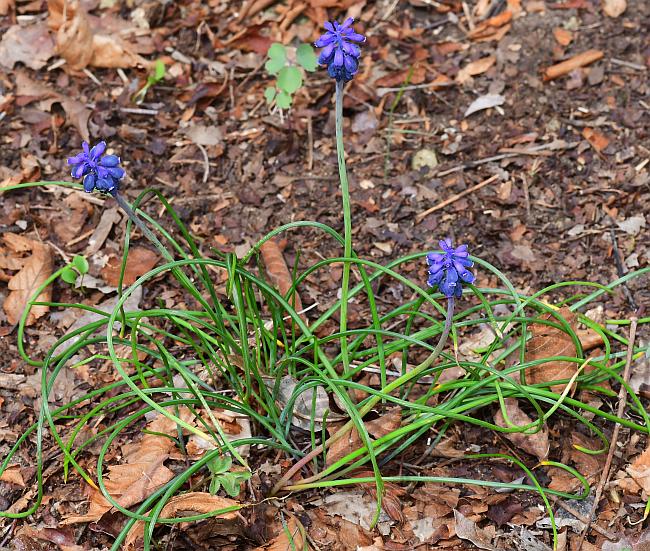Muscari racemosum (L.) Mill.
Grape Hyacinth, Blue Bottle

Introduced
CC = *
CW = 5
MOC = 5
© SRTurner
Muscari racemosum (L.) Mill.Grape Hyacinth, Blue Bottle | |
 |
Introduced CC = * CW = 5 MOC = 5 |
© SRTurner |
|
Family - Liliaceae Habit - Perennial forb with bulbs covered with a membranous to papery, smooth, outer coat, lacking the odor of onion or garlic, glabrous. Stems - Erect scape to 30 cm, glabrous, often glaucous, single from base, unbranched, green below, purplish in inflorescence.
Leaves - Basal, 10-25 cm long, 1-3 mm wide, tubular, hollow, circular in cross-section and grooved longitudinally along the inner side.
Inflorescences - Terminal dense indeterminate racemes.
Flowers - Sepals and petals fused nearly to the tips, urn-shaped to globose, blue, glabrous, with 6 small lobes at apex. Sterile, terminal flowers few, ascending, with stalks 0.5-5.0 mm long and blue to purplish blue perianth 2-4 mm long. Fertile flowers with stalks 2-5 mm long at flowering, elongating in fruit, the perianth 4-5 mm long, narrowly urn-shaped to nearly globose, blue to purplish blue.
Fruits - Capsules, 3-angled, glabrous, glaucous, 5 mm long and broad. Seeds 2 per locule, black.
Flowering - April - May. Habitat - Bottomland forests, fields, pastures, roadsides, railroads, and other disturbed areas. Origin - Native to Europe. Lookalikes - Muscari botryoides. Other info. - This species is apparently a relatively recent escape from cultivation in Missouri. As of 2020 it has been reported from five counties in the southeastern region of the state. Beyond Missouri it is found in scattered locations throughout the southeastern U.S. It is also frequently cultivated. Photographs taken at Bootleg Access, Washington County, MO, 4-7-2020, and at Silver Mines Recreation Area, Madison County, MO, 4-28-2020 (SRTurner). |